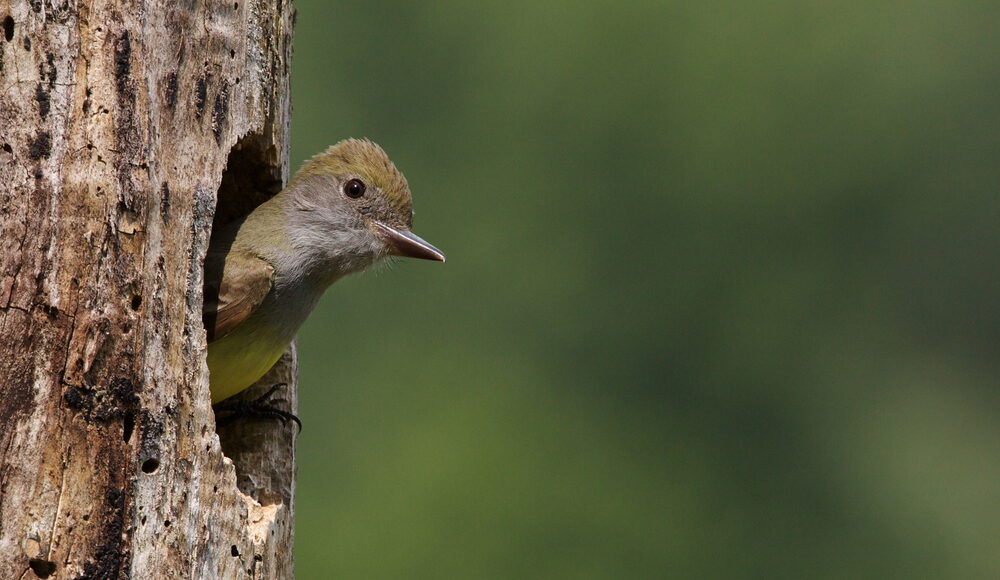Great Crested Flycatcher, Myiarchus crinitus
Bill Rowe
One group that’s important to learn, with thirteen regular species in our area, is the family Tyrannidae, the New-World flycatchers—birds of trim shape and alert posture that capture insects of all types. A good starting point is the widespread Great Crested Flycatcher, with its rich blend of colors and its raucous calls. Sticking mostly to treetops, it occurs in all manner of forests across Missouri, as well as parks and suburban areas that bear some resemblance to forests, i.e., those with plenty of tall trees. Given this kind of cover, you may have Great Crested Flycatchers nearby and not realize it, since they tend to stay within the foliage and require some patience for a good look. Your first clue to their presence will often be a loud, upslurred “wheeeep!” along with other raspy whistles and churring notes. Early in the morning, Great Cresteds (like many other flycatchers) will string some of these notes together into a long, more or less coherent sequence, called the dawn song. They are our only local flycatchers to nest in tree cavities, such as knotholes, broken limbs, and old woodpecker holes, or man-made openings, even nest boxes. And, curiously enough, they often work shed snake skins into their nest.
IDENTIFICATION: All Great Crested Flycatchers—males, females, young birds—look nearly alike. They are large for a flycatcher, almost robin-size, with olive-brown on the crown and back, medium gray on the face and breast, bright yellow on the belly, and some rufous in the wings and tail. Given a good view, they aren’t like any other flycatcher around St. Louis, or any other bird, for that matter; the closest would be the scarce Western Kingbird, but that is a bird of open areas with a black tail edged in white. In the western U.S. and the tropics, there are other species in this genus that can be very similar to the Great Crested—an identification puzzle that we don’t have here.
ST. LOUIS STATUS: A common summer resident, typically arriving in late April and gone by late September on its southbound migration, to spend the winter from southern Mexico to Colombia.
Learn more and listen to the songs and calls of Great Crested Flycatchers here.




